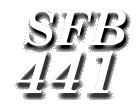|
|
Invited Talk
Questioning the unquestionable: Semantics and
(ir)regularity.
It is widely believed that the difference between regular and irregular
verbs is restricted to form. This presentation questions this belief. A
series of lexical statistic studies is reported, which all show that
irregular verbs have a greater density in semantic space. Irregular verbs
tend to have greater semantic neighborhoods containing relatively many
other irregulars compared to regulars. We show that this greater semantic
density for irregulars is reflected in association norms, familiarity
ratings, visual lexical decision latencies, and word naming latencies.
Meta-analyses of the materials of two neuroimaging studies show that in
these studies, regularity is confounded with differences in semantic
density. Our results challenge a key assumption of the dual route model,
the supposed formal encapsulation of rules of inflection, and support
lines of research in which probabilistic pattern matching is recognized as
part and parcel of human language.
|
